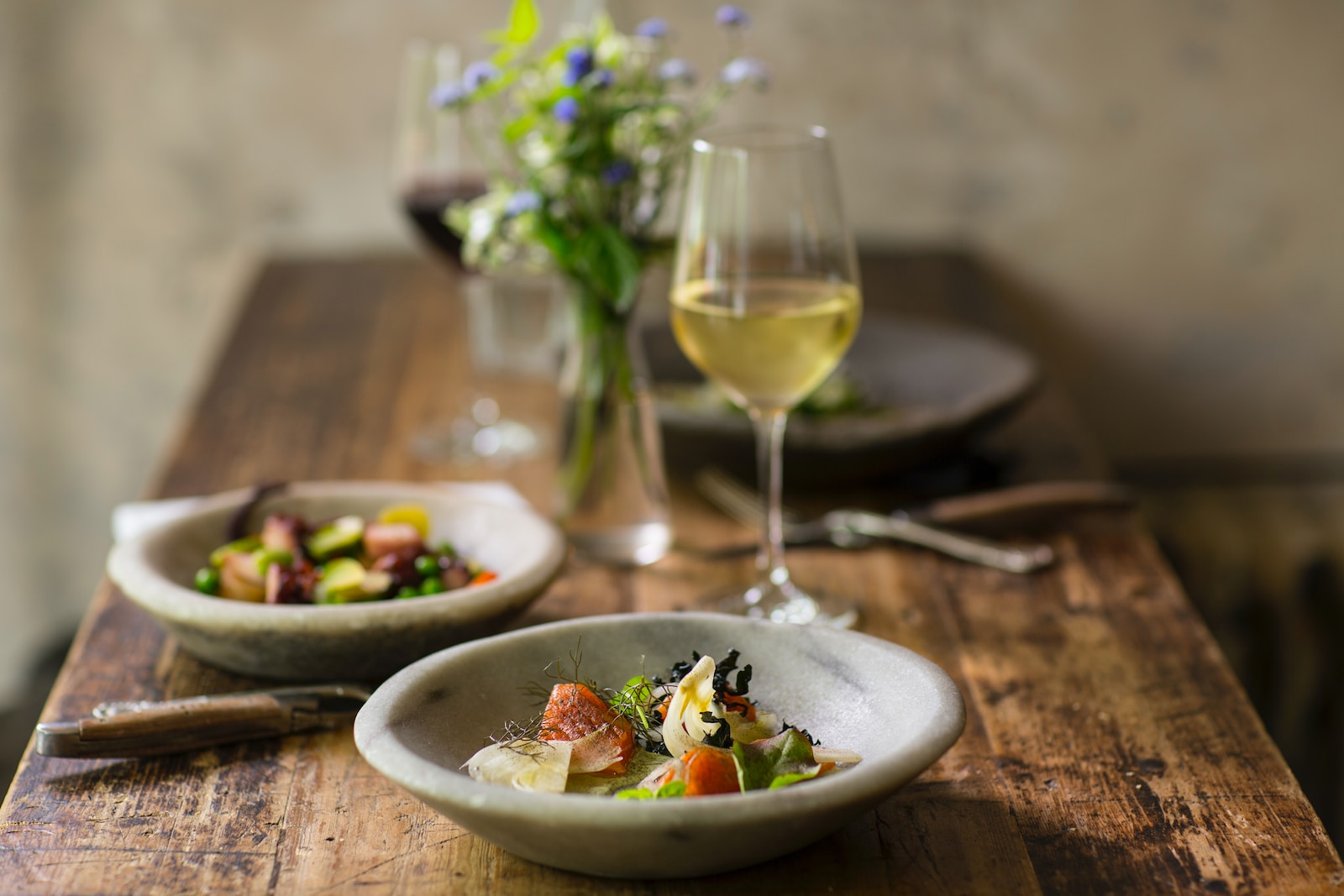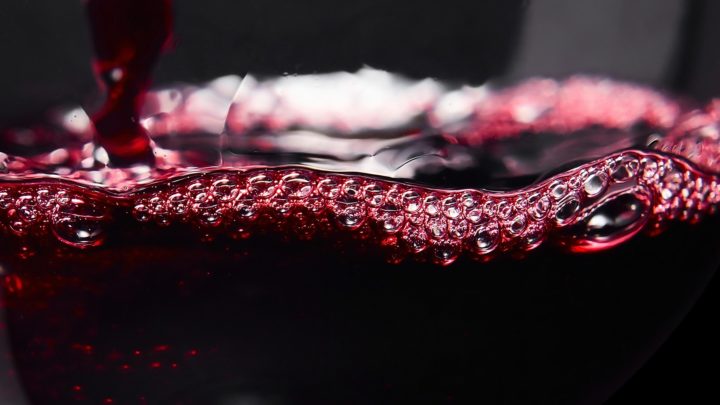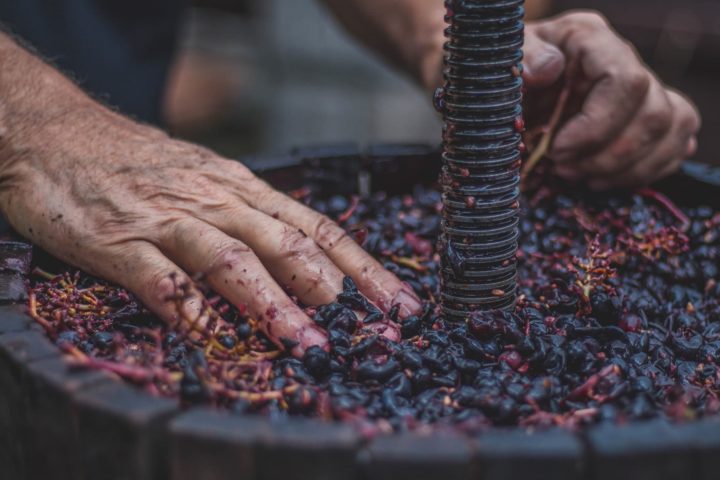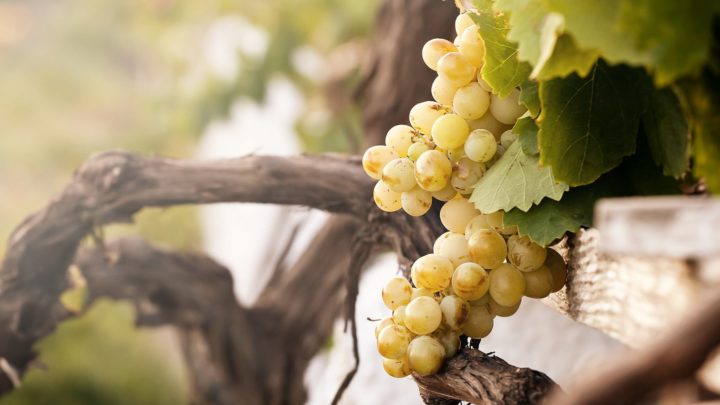The perfect combination of wine and food has a long tradition in gastronomy and transforms a simple dish into an orchestral experience of pleasure. The right pairing enhances the culinary experience and makes every bite and every sip a true delight.
In this article, we’ll get to the bottom of the art of food pairing – that is, the combination of wine and food – by breaking it down into 10 basic rules. If you master these, you’ll be able to create a symphony of flavors at home that will give you and your guests an unforgettable dining experience. So let’s get started!
“A meal without wine is like a day without sunshine.”
Anthelme Brillat-Savarin
1. Watch for an Equal Intensity
The intensity of a wine is determined by its body, tannins and alcohol content. In food pairing, it is important to match the intensity of the wine to that of the dish. A light Pinot Noir goes better with light dishes such as poultry or grilled salmon. A full-bodied Cabernet Sauvignon, on the other hand, is better suited to heavier, more substantial braises like boeuf bourguignon. The balance ensures that neither wine nor food drowns out the other, so you can enjoy both components.
2. Acidity in the Dish = Even More Acidity in the Wine
Acidity gives wines their freshness and liveliness. In food, it usually comes from ingredients such as citrus fruits, vinegar or tomatoes. If you now want to combine an acidic food with a wine, you should make sure that the wine always contains a little more acid than the dish. If this is not the case, the wine will seem flat, stale and literally fall apart on the palate.
A salad with vinegar-oil dressing therefore needs a really acidic wine (e.g. a Sauvignon Blanc).
“Food without wine is a corpse; wine without food is a ghost; united and well matched they are as body and soul, living partners.”
Andre Simon
3. Sweetness fights Hot Dishes
If you love the spiciness of Asian cuisine as much as I do and have always wondered what wine might go with it, this food pairing rule is especially important. To soften the heat of the chilies, you should reach for a semi-dry to fruit-sweet wine. The residual sugar in the wine helps soften the perceived heat from the spices and supports the sweet flavors of Asian cuisine. To pair with a spicy Thai or Indian dish, a semi-dry Riesling is therefore perfect.
4. Bitter + Bitter = Even more bitter
Wines containing tannins should not be combined with bitter dishes, as they can increase the bitterness, creating an unpleasant taste. The tannins come from the skin, seeds and stems of the grape, give the wine its structure and provide the typical feeling on the palate. For this reason, many wines rich in tannins become a real pleasure only with the appropriate food.
A tannin-rich Cabernet Sauvignon should therefore not be paired with bitter foods such as cocoa, walnuts, chicory, arugula or grapefruit.
Instead, you should accompany tannic wines with foods rich in fat and protein to balance their astringency and bitterness.
5. Watch out for the dominant flavors
Before you serve a wine with food, you should consider the predominant flavors of the dish, and in most cases, the sauces give direction and can significantly influence the taste of the wine.
For example, if you like to enjoy your steak with a chimmichurri sauce, you can go for a Sauvignon Blanc or a Grüner Veltliner in addition to a Cabernet Sauvignon, as they accentuate the herbaceous green notes of the sauce.
By matching your choice of wine to the predominant flavors of the dish, you can create a harmonious and enjoyable dining experience.
6. Balancing the Weight of Wine and Food
By the weight of a dish, of course, we do not mean its “physical weight”, but how rich and strong it is. This is influenced by factors such as fat content, flavor intensity and cooking method. With wine, on the other hand, its alcohol content, tannin structure and concentration of flavors determine its weight. It’s important to match the weight of your wine to that of your dish.
For example, a full-bodied wine like a Cabernet Sauvignon pairs well with a rich, heavy dish like a steak, while a light wine like a Pinot Grigio pairs well with a light dish like grilled fish. This balance ensures that neither the wine nor the food outweighs the other, so you can enjoy both elements of your meal.
7. Consider the Intensity of Flavors
The flavor density of your dish and that of the wine are other factors to consider when food pairing. Similar to weight, you should make sure that both are in balance and that neither overpowers the other.
A strong dish like a spicy curry needs an equally strong wine that can stand up to the intense flavors, such as a Syrah or a Gewürztraminer – depending on the type of curry.
A more delicate dish with subtle flavors, such as poached cod, on the other hand, pairs better with a similarly elegant wine with subtle flavors, such as a Sauvignon Blanc.
8. Fat Needs Acidity!
Dishes with high fat content call for wines with high acidity, which cuts through the richness of the dish like a sharp knife and refreshes the palate. This is known as complementary pairing, since acid is the counterpart of fat.
Acidic grape varieties such as Riesling or Sauvignon Blanc can make rich, fatty or sweet dishes seem lighter, while dishes with high acidity can be happily accompanied by residually sweet wines.
If you’ve ever tried a champagne with fetti-salty fries, you’ll know why the combination (acid + fat + salt) works so brilliantly!
9. Tannin and Salt – Watch out!
Salty dishes and wines rich in tannins, such as Carbernet Sauvignon, Nebbiolo or Tannat, are enemies! This is simply because the salt increases the sensitivity of the taste receptors, which is why the bitter tannins come unpleasantly to the fore.
For a good pairing, you need to find a good balance here. If you want to enjoy a Cabernet Sauvignon with your steak, you should go easy on the salt. However, if you only have a low-tannin Pinot Noir on hand, don’t skimp on the salt. This is a great example of how food pairing can be influenced by simple means.
10. Sweet Dessert = Even Sweeter Wine
The rule of thumb is that a wine must be at least as sweet as the food. If your dish is sweeter, the wine will taste sour or flat. This rule naturally applies especially to desserts. With desserts, you often have to consider their temperature as well. The colder, the stronger and sweeter the wine must be, because our taste buds become sluggish in the cold. For this reason, many soft drinks are undrinkable at room temperature because they taste too intense and sweet.
A sweet chocolate cake with a liquid center and an even sweeter port wine are a classic example. A comparatively less sweet apple pie, on the other hand, pairs wonderfully with a wine that is not quite as sweet, such as a Riesling Spätlese.
10 Perfect Pairings for Wine and Food
- Grilled salmon with lemon butter sauce
The buttery notes of the Chardonnay complement the richness of the salmon and lemon butter sauce. - Spaghetti Bolognese
The Italian red wine harmonizes perfectly with the hearty meat and tomato sauce of the Bolognese. - Roast chicken with herbs
The light, fruity nuances of the Pinot Noir complement the savory flavors of the roast chicken. - Beef steak with pepper sauce
The full-bodied, tannic character of the Cabernet Sauvignon stands up to the rich, bold flavors of the steak and pepper sauce. - Shrimps in garlic oil
The fresh, fruity characteristics of the Sauvignon Blanc balance the richness of the shrimp and garlic sauce. - Pizza Margherita
Barbera! An Italian red wine with high acidity that breaks the richness of the cheese and complements the tomato sauce. - Thai spicy curry
The sweetness from the Riesling helps soften the spiciness of the curry. - Duck confit
The soft tannins and fruity notes of the Merlot complement the rich, savory flavors of the duck confit. - Mushroom risotto
The earthy notes of the Nebbiolo pair beautifully with the creamy, umami-rich mushroom risotto. - Chocolate soufflé with liquid core (Lava Cake)
Port Wine. The sweetness and richness of the port complement the intense chocolate flavors of the chocolate cake.
The Last Drop: Conclusion of Your Culinary Adventure
Mastering the art of pairing wine with food isn’t that complicated. By following these 10 basic rules, you’ll be well on your way to creating harmonious combinations that will enhance your dishes and please your palate. Remember that the best pairing is the one you like, so don’t be afraid to experiment and find your own favorites. After all, the joy of food and wine pairing is in the discovery and delicious experiences you gain.
Remember that these rules are not set in stone and may be broken. The most important thing is to enjoy your food and wine. Cheers!









